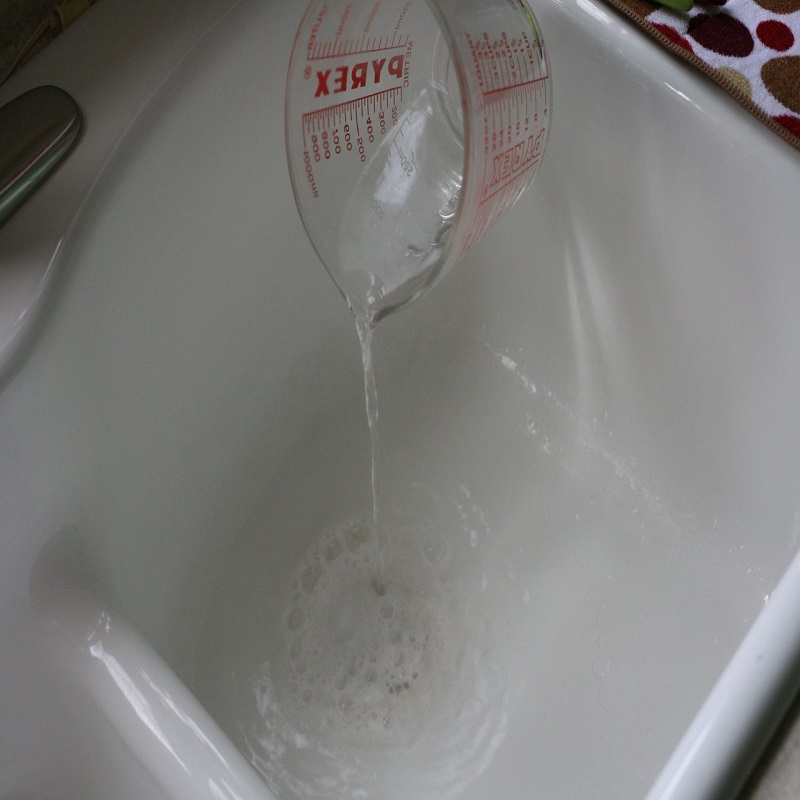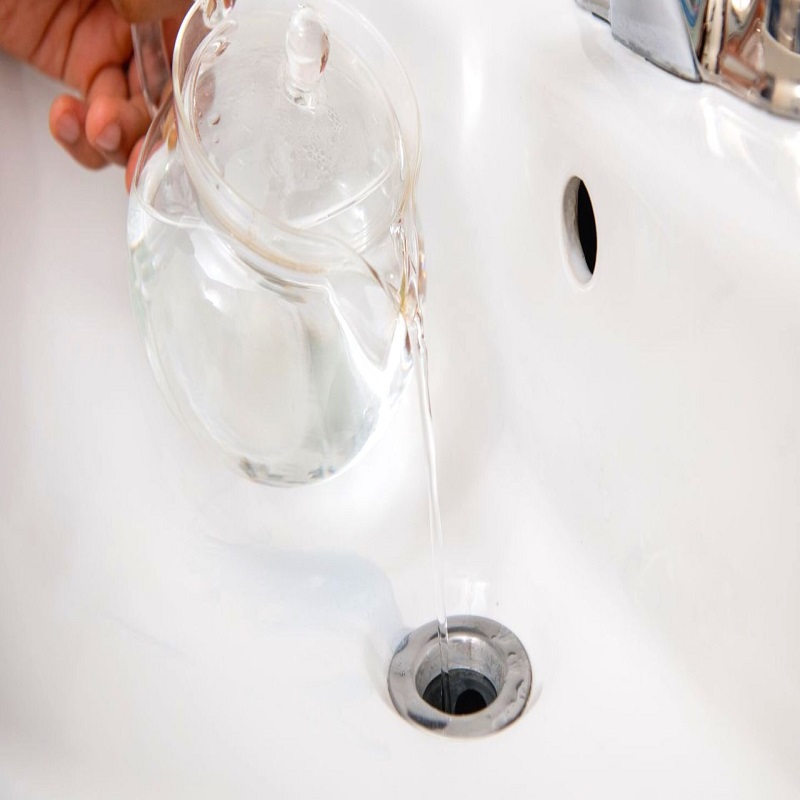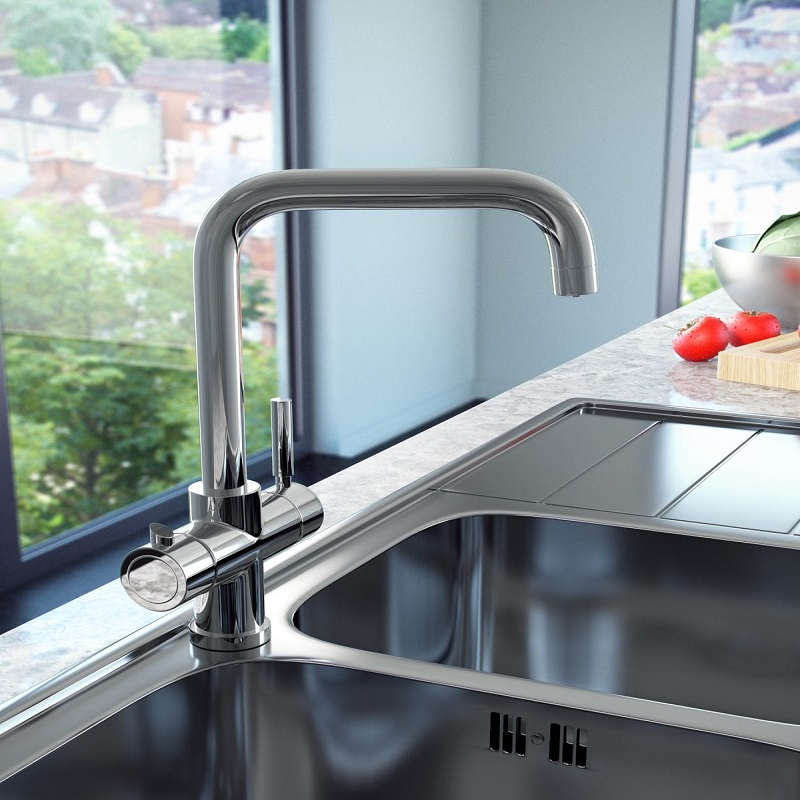Is it safe to pour boiling water down kitchen sink? Many of us have been taught to pour boiling water down the sink to clear clogs and remove grease buildup. However, there is some debate over whether or not this practice is safe for your plumbing system. In this article, we will explore the potential risks and benefits of pouring boiling water down the kitchen sink, and provide some alternative methods for keeping your pipes clean and clog-free.

Potential Risks
While it may seem like a quick and easy fix, pouring boiling water down the under kitchen sink can actually cause more harm than good. The extreme heat of the water can warp or damage PVC pipes, which are commonly used in modern plumbing systems. This can lead to leaks, cracks, and even burst pipes, resulting in costly repairs and water damage to your home.
In addition, pouring boiling water down the sink can also push clogs further down the pipes, making them more difficult to remove. This can result in a complete blockage, leading to issues with your drainage system and potentially causing foul odors to emanate from your sink.
Another potential risk of pouring boiling water down the sink is that it can damage the seals and gaskets in your pipes. The extreme temperature can cause these materials to deteriorate more quickly, leading to leaks and water damage.
Safe Alternatives
Fortunately, there are several safe and effective alternatives to pouring boiling water down the kitchen sink. One popular method is using a combination of baking soda and vinegar to clear clogs and remove grease buildup. Simply pour half a cup of baking soda down the drain, followed by a cup of vinegar. Allow the mixture to fizz and bubble for a few minutes, and then flush the drain with hot water to clear away the debris.
Another alternative is using a bio-enzymatic cleaner, which contains natural enzymes that break down organic matter and help keep your pipes clean and free of clogs. These cleaners are safe for all types of plumbing and are environmentally friendly, making them a great choice for households looking to avoid harsh chemicals.
Regular maintenance is another key to preventing clogs and grease buildup in your kitchen sink. Make sure to run hot water through the drain after each use, and avoid pouring grease and food scraps down the sink. Investing in a drain strainer can also help to catch debris and prevent it from building up in your pipes.
Benefits of Using Boiling Water
While there are potential risks associated with pouring boiling water down the kitchen sink, there are also some benefits to this method. Boiling water can help to melt and flush away grease and oil that has accumulated in your pipes, which can lead to a cleaner and more efficient drainage system.
In addition, pouring boiling water down the sink can help to sanitize and deodorize your drains, eliminating foul odors and bacteria that may be present. This can help to keep your kitchen smelling fresh and clean, and reduce the risk of harmful pathogens entering your home.

How to maintain kitchen sink
The kitchen sink is one of the most used fixtures in any household. It sees a lot of action and can easily become dirty or clogged if not properly maintained. By following some simple maintenance tips, you can keep your kitchen sink in top condition and avoid costly repairs or replacements down the line.
Cleaning
One of the most important aspects of maintaining your kitchen sink is keeping it clean. Regularly washing and scrubbing the sink can prevent the buildup of grime, stains, and unpleasant odors. Use a mild detergent and a non-abrasive sponge to clean the sink, and rinse thoroughly with water. For stubborn stains, you can use a mixture of baking soda and water or a special sink cleaner. Don’t forget to scrub the drain and faucet as well.
Preventing Clog
Clogged drains are a common issue with kitchen sink drain pipe, but they can be easily prevented with some simple measures. Avoid pouring grease, oil, or food scraps down the drain, as these can solidify and clog the pipes. Use a strainer to catch food particles and small debris before they enter the drain. Additionally, you can pour boiling water down the drain once a week to help prevent buildup.
Avoiding Damage
To keep your kitchen sink in good condition, it’s important to avoid causing any damage. Be careful not to drop heavy objects into the sink, as this can cause cracks or chips in the material. Avoid using abrasive cleaners or scrubbing pads, as these can scratch the sink’s surface. Additionally, be mindful of the water temperature when washing dishes, as extreme hot or cold water can damage certain types of sinks.
Maintaining the Garbage Disposal
If your kitchen sink is equipped with a garbage disposal, it requires some specific maintenance to keep it running smoothly. Run cold water through the disposal while using it to help flush out any food particles. Avoid putting fibrous or starchy foods, such as celery or potato peels, into the disposal, as these can cause clogs. Periodically grind a few ice cubes and a slice of lemon in the disposal to help clean and deodorize it.
Checking for Leaks
Regularly inspect the area around your kitchen sink for any signs of leaks. Look for water stains or mold growth under the sink, and check the faucet and drain connections for any dripping or pooling water. Addressing leaks promptly can prevent water damage and costly repairs. If you notice any leaks, tighten the connections or call a plumber for assistance.
Kitchen sink styles
Farmhouse Sink
The farmhouse sink, also known as an apron front sink, is a popular choice for traditional and country-style kitchens. This type of sink features a large, exposed front that extends past the edge of the countertop. It is often made of porcelain, fireclay, or stainless steel and comes in a variety of colors and finishes to match different kitchen designs.
One of the main advantages of a farmhouse sink is its spacious and deep basin, which is perfect for large pots and pans. The apron front design also adds a touch of rustic charm to the kitchen, making it a standout feature.
Undermount Sink
An undermount sink is installed beneath the countertop, creating a seamless and modern look. This style is popular in contemporary and minimalist kitchens as it provides a clean and streamlined appearance. Undermount kitchen sink are available in various materials such as stainless steel, granite, and ceramic.
One of the benefits of an undermount sink is that it allows for easier countertop cleanup, as there are no raised edges where crumbs and spills can accumulate. It also provides a sleek and uninterrupted surface for food preparation.
Drop-In Sink
Drop-in sinks, also known as top-mount sinks, are installed on top of the countertop. They have a rim that sits on the edge of the countertop, creating a visible border. This style of sink is versatile and can be found in a wide range of materials, including stainless steel, cast iron, and quartz.
Drop-in sinks are easy to install and can be replaced without having to change the entire countertop. They are also available in various sizes and shapes to fit different kitchen layouts.
Conclusion
In conclusion, while pouring boiling water down the kitchen sink may seem like a quick and easy fix for clogs and grease buildup, it is not the safest or most effective method. The extreme heat of the water can damage pipes and seals, and can push clogs further down the drainage system. Instead, consider using alternative methods such as baking soda and vinegar, bio-enzymatic cleaners, and regular maintenance to keep your pipes clean and clog-free.

